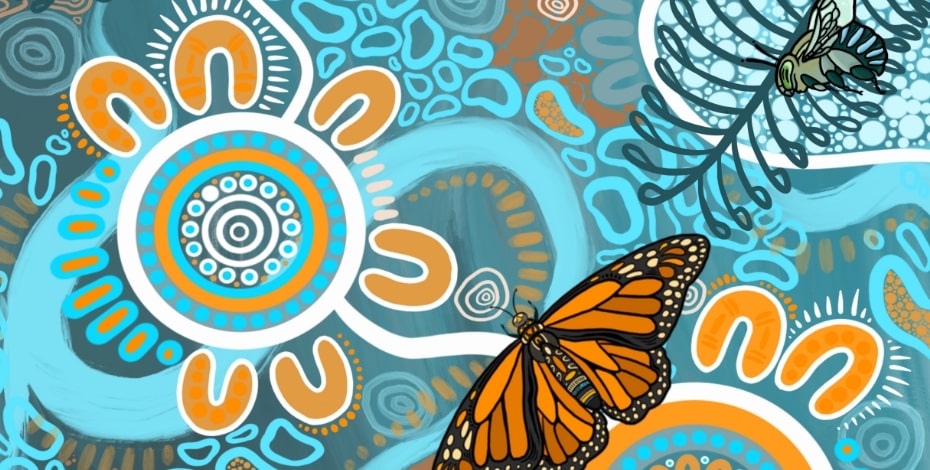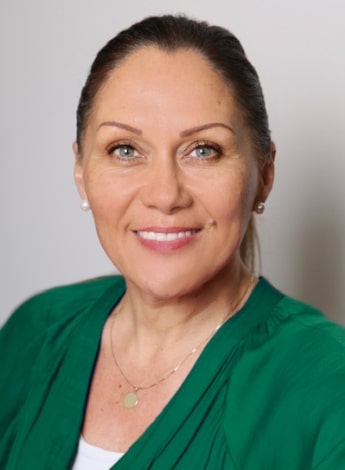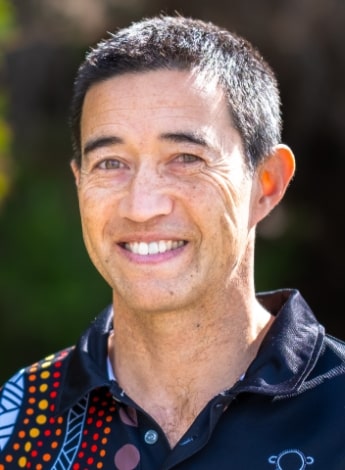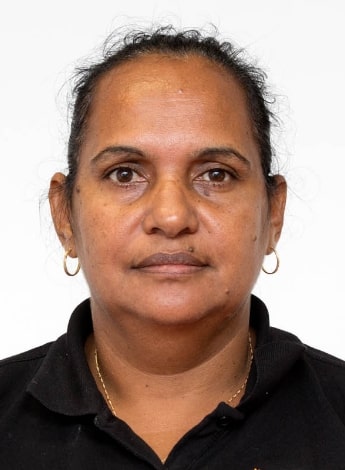
Co-design for Aboriginal and Torres Strait Islander healthcare and research

There is a growing tendency to use co-design to develop programs and projects for healthcare issues that affect Aboriginal and Torres Strait Islander people and communities. Aboriginal and Torres Strait Islander and other researchers talk about why co-design is important and how to get the most out of it.
Co-design is a partnership approach that involves shared decision-making between people with lived experience and stakeholders with professional expertise.
It allows consumers with lived experience to play an equal role in improving healthcare systems, designing education programs and ensuring that research provides practical results.
Co-design is increasingly being used to develop programs and projects relating to healthcare issues that affect Aboriginal and Torres Strait Islander people and communities.
When it is done well, it can achieve meaningful outcomes that make a significant impact, says Libby Massey OAM, director of research, clinical services and education at the Machado-Joseph Disease Foundation (MJDF).
The MJDF is an Aboriginal-controlled community organisation that provides support in the form of research, education and community and clinical services to people with Machado-Joseph disease (MJD) and related conditions.
‘History has shown the clear negative impacts of not engaging in co-design when working with Aboriginal and Torres Strait Islander communities and people.
‘At the very least, there is individual disengagement, which can be interpreted as “noncompliance” or lack of interest in the results.
‘This can lead over time to implicit racism in health systems.
‘At worst, entire programs can be designed and implemented that do not meet people’s needs and expectations and the result is a significant waste of resources,’ Libby says.
Good co-design in this space should take a strengths-based approach—rather than focusing on deficits, risk behaviours and problems, it should focus on Aboriginal and Torres Strait Islander ways of knowing and being, social and cultural determinants of health, and empowering Aboriginal and Torres Strait Islander people and communities to take the lead.

Donna Murray, CEO of Indigenous Allied Health Australia, says Aboriginal and Torres Strait Islander people need to be involved in co-design from the start to the very end.
The most important thing about co-design, says Donna Murray, the CEO of Indigenous Allied Health Australia and a proud Wiradjuri- Wonnarua woman, is to make sure that Aboriginal and Torres Strait Islander people lead the co-design of Aboriginal and Torres Strait Islander-focused projects, from the smallest research project to the largest government healthcare program.
‘For me, co-design is about shared power.
‘It’s about bringing everybody’s ideas, expertise and skills to the table and identifying what they are, like
an asset-based mapping exercise.
‘What’s everybody bringing? How can we utilise it? What’s the vision?
‘With co-design, it has to be a shared vision,’ says Donna.
Critical enablers of co-design include strong leadership on both sides of the table, respect and a willingness to negotiate over sticking points.
Donna notes that there are fundamental differences between Aboriginal and Torres Strait Islander worldviews and Western approaches to healthcare and that these differences need to be respectfully addressed for culturally safe solutions.
‘We need to ask, as part of our co-design, “What does this look like now in your community?
‘How does this work in implementation?
‘What do government and the decision-making process need to look like for you?
‘How can we monitor for progress and make sure that we’re hitting community priorities?
‘And if we’re not, that’s okay, but what do we need to do to redesign that together?”’ she says.
Donna also cautions that co-design doesn’t end with the planning stages—it needs to be carried through the entire project.
‘When we say co-design, we often just think about the development.
‘We don’t think about the implementation, the evaluation, the monitoring and the governance.
‘Co-design has to include all of those components.
‘If there’s no governance or accountability in a co-design process—which, again, is co-led and agreed to—then that process is not successful.
‘When the dominant party at any one of those stages takes over, then co-design is out the window,’ Donna says.
‘Often co-design is seen as the design bit—they develop it; it goes off to government or a mainstream NGO.
‘There’s no co-design in the delivery and implementation.
‘There’s no consideration of cultural concepts of implementation, of evaluation, of data sovereignty, of governance and decision-making.
‘And if that’s not in the co-design, then nothing will actually work, because the voices of Aboriginal people will not be heard.’
So a key challenge for co-design is making sure that it’s done correctly and isn’t merely a token effort.

Brooke Conley is an Aboriginal physiotherapist and researcher, who is using co-design to develop arthritis education resources for Aboriginal and Torres Strait Islander people.
Brooke Conley, a Ngiyampaa woman and a PhD student at the University of Melbourne, is part of a large interdisciplinary team developing education resources about arthritis conditions for Aboriginal and Torres Strait Islander people.
The co-designed Staying Moving, Staying Strong project includes both Aboriginal and non-Aboriginal researchers as well as a community reference group comprising Aboriginal people with lived experience of various arthritis conditions.
From her perspective, developing relationships is the most important part of co-design.
‘The first thing that we considered was engaging with the community reference groups.
‘They have guided all the different stages of the projects and have been integral to creating the resources. Alongside that, we also worked on creating relationships with health services,’ Brooke says.

Dr Ivan Lin, a physiotherapist and researcher in Western Australia, says building relationships with Aboriginal communities takes time.
One of Brooke’s colleagues on the Staying Moving, Staying Strong project is Dr Ivan Lin, a senior lecturer at the Western Australian Centre for Rural Health and a Specialist Musculoskeletal Physiotherapist (as awarded by the Australian College of Physiotherapists in 2021) who practises at the Geraldton Regional Aboriginal Medical Service.
Ivan’s collaborative research aims to improve the management of musculoskeletal pain conditions; clinical communication; Aboriginal, remote and rural health.
‘From a practical perspective, we can’t work in this space unless we have cultural advisers to work alongside,’ Ivan says.
‘If you are visiting a small town or community, you need someone to introduce you to the community and help you to develop good, trusting relationships.’
Building those relationships can take time.
‘You need to listen to people and have cultural humility.
‘Be honest and straight with the people you are working with; don’t promise things you can’t deliver.
‘And follow up when you say you will,’ he says.
‘People come in and don’t spend the time getting to know the local Aboriginal medical service and the community.
‘Six months isn’t necessarily enough time to build relationships.’
Julie Wunungmurra, a Yolŋu woman from East Arnhem Land in the Northern Territory and an Aboriginal community health worker at the MJDF, agrees.
‘When people rush, when they don’t invest in relationships and establish trust, when they skip over important steps, when they don’t give people the chance to sit with information and to think about it deeply—this is not good.
‘You won’t get a true, deep story that way,’ Julie says.
One of Julie’s colleagues at the MJDF, physiotherapist Alison Grootendorst, says that sometimes it’s better to let the Aboriginal community approach you rather than the other way round.
‘This is a great way to make sure that the research you are doing is what the community wants,’ Alison says.
She says that researchers shouldn’t be too set in their thinking, especially when approaching a remote community.
‘Be open, flexible and willing to learn and relearn.
‘Take your time. Don’t rush.
‘Build relationships so you can be told a deeper story and listen carefully.
‘If you don’t understand something, ask,’ Alison says.
‘Know who you are and what you bring to the research—your knowledge but also your cultural lenses.
‘Make sure that relevant local people are part of your research team.
‘They will be able to lead you, to lead the research in partnership with you and to make sure you are working in the
right way.
‘They will bring skills and knowledge that can’t be learnt and that will help the research come up with more meaningful results— which is better for everyone.’
Doing things ‘Our Way’

MJDF physiotherapist Alison Grootendorst is part of a MJDF program providing therapy services to remote communities.
MJD and spinocerebellar ataxia type 7 are dominantly inherited, neurodegenerative diseases that cause very severe progressive disability.
Among Aboriginal families living across Northern Australia, including in the Groote Eylandt Archipelago and in Arnhem Land, MJD occurs at about 100 times the international average rate.
The MJDF works in partnership with Aboriginal people who have MJD and spinocerebellar ataxia type 7 and their families and communities.
‘The services we provide have their genesis and direction in families and communities impacted by MJD.
‘The remote Aboriginal families have taught us that an approach that honours their culture, language and traditions while adding in the benefits of best practice knowledge from a Western perspective is what they want,’ says Alison.
Alison and Julie presented a session about the MJDF approach to co- design and cultural safety, known as ‘Our Way’, at last year’s IGNITE 2023 national physiotherapy conference.
‘“Our Way” is a way of working that has enabled the clients of the MJDF to be the effective drivers of the service we provide, with their needs and priorities reflected in the programs developed and in the way they are implemented.
‘This has allowed the MJDF to deliver genuinely person- and family-centred support,’ Alison says.
The ‘Our Way’ approach incorporates a two-way engagement model that prioritises Aboriginal cultural advisers, Aboriginal community workers and clients guiding interactions across all of their programs.
Designed by the foundation’s cultural advisers, it is mindful of kinship and culture and the need to develop strong relationships based on trust.
While the organisation has mostly focused on community, education and research services and support, it has recently begun providing NDIS-funded clinical services for MJD in response to a request from the communities it serves.
‘After the NDIS rollout, there was a transition from largely Department of Health and Aged Care-provided therapy to a private market of NDIS service providers.
‘Over time, as new service providers popped up everywhere with increased funding, we should have seen increased access to services for families with MJD.
‘But what we saw was that people still really struggled to access the services,’ Alison told the audience at IGNITE.
The foundation approached the establishment of clinical services by following ‘Our Way’ principles, working directly with MJDF clients and their families and carers to identify their needs and document their experiences, including facilitators and barriers experienced with other providers of clinical and therapeutic services.
They discovered that the main providers were for-profit organisations with a very Western approach to providing clinical services and little understanding of working with Aboriginal people and communities.
‘Not much value was placed on relationship building or the family orientation of our clients and, in general, organisations didn’t work in partnership with Aboriginal staff or community consultants,’ says Alison, noting that the high turnover of staff in these organisations was also a barrier to providing culturally appropriate services.
In collaboration with the communities, the MJDF developed a proposal for a clinical service and was given the green light by the board early in 2023.
‘When we go to new therapists or doctors, sometimes they don’t know about MJD. Our clients told us that they were having to tell their story over and over, which made them feel tired and sad.
‘Many of them would think, how can this person help us when they don’t know about MJD?
‘If there wasn’t a Yolŋu person, an Indigenous person, there supporting them at the appointment, there could be lots of miscommunication and confusion.
‘Our clients would not have a good experience and then would not want to go back there,’ says Julie.
‘But when our clients talk about working with the MJD Foundation, they say they trust us and what we tell them.
‘They like the way we are able to work more flexibly, taking the whole person into account, and that we work not only with them, but also with their families.’
‘We are learning, along with our clients, how to combine their knowledge and preferred ways of working with the clinical experience of our allied health team and the evidence from peer-reviewed literature so we can deliver strengths-based, multidisciplinary therapy and our clients can achieve their goals,’ Alison says.
Alison and Julie both say that one of the most important things to remember when working with Aboriginal communities is not to make assumptions.
‘Whether it be coming up with a therapy plan or inviting people to participate in research, things go badly when you make assumptions.
‘Never make assumptions about likely interest or lack of interest.
‘Never make assumptions about someone’s capacity and always provide people with the information they need to make an informed decision for themselves.
Don’t make decisions for others,’ Alison says.
The Yolŋu perspective

Julie Wunungmurra, a Yolŋu woman from East Arnhem Land, is an Aboriginal community health worker at the MJDF.
As an Aboriginal community health worker at the MJDF and a proud Yolŋu woman, Julie provides insight into co-design, relationships and trust.
The foundation of all co-design work is relationships and trust.
Building and maintaining relationships and partnerships takes work.
From a Yolŋu perspective, the four things that we think are most at the core of our relationships and partnerships are gurrultu, makmakthun, ŋayaŋu-wuyyunamirr and märr-nhirrpanmirr (or kinships, respect, caring and trust).
- Gurrultu is kinship—this is the strong foundation of all knowledge and culture. All people, animals, places and elements of the Yolŋu world are in this kinship system and are either Dhuwa or Yirritja. Through kinship, we are strongly connected to each other, our ancestors, our stories and our Country. We need to be in a relationship with you to do research with you. You need to become part of our world.
- Makmakthun is respect—it’s important that you show respect for language, for culture and for people—we show respect to you and you show respect to us. Showing that you are willing to learn, being patient and listening are important ways we can show respect to each other.
- ŋayaŋu-wuyyunamirr is caring—it’s about having your heart in the right place. When working with Yolŋu, this is very important. This work is not about you and advancing your own career. Having a heart for this work—caring for family and for deeper understanding, being generous, helping and sharing— these are Yolŋu values.
- Märr-nhirrpanmirr is trust—we need to build relationships over time, developing trust in each other. We can do this by working together, sharing stories, listening and learning together. We can also do this by talking about non-work- related things, spending time together, joking around, having fun.
When doing research with Yolŋu and when working with Yolŋu co-researchers, there are a few important Yolŋu concepts that you should think about.
- Galkun walalŋ ŋayaŋu is about the importance of waiting for people to be ready. Balanda (non- Indigenous people) are often in a hurry. Don’t rush! We need to go slowly, sharing information, offering an invitation and waiting for people to accept or ask. Respect the fact that people are busy and have many competing priorities; wait for their availability and interest—in their time. This is important.
- Rrambaŋi djäma gungayunamirr is about working together as a family group. We work together, not singled out on our own—that might make us feel shame. We learn together and help each other. We feel happy and strong when we work together as a family. Working in this way, we can teach our children and pass on knowledge from one generation to the next.
- Märrma’ dhukarr is about working with two languages, in two ways. Our language is strongly linked to our culture, our world view. We need to communicate in our first language or use Yolŋu languages and English together. Yolŋu need to speak in our first language to have deep conversations in words and ways that we understand. Then we have to have an interpreter so we can share our thinking and can all understand better together. When we work together in this way, we can use the best knowledge from both Yolŋu and Balanda. Remember— Balanda are not the teacher; we are learning together.
- Lärrum dhukarrku ga mälaŋmaram dharaŋanamirr is about searching for deep understanding. Sometimes we have to work hard to search together for a deeper understanding. Sometimes we need to think about things, to sit with them and come back to them later. We need to share knowledge and stories from both cultures. When we share from our hearts, everyone has the opportunity to speak, listen, learn and help each other.
Working this way—Yolŋu and Balanda coming together, sharing, learning and helping each other—we can get the best from both worlds.
© Copyright 2025 by Australian Physiotherapy Association. All rights reserved.





